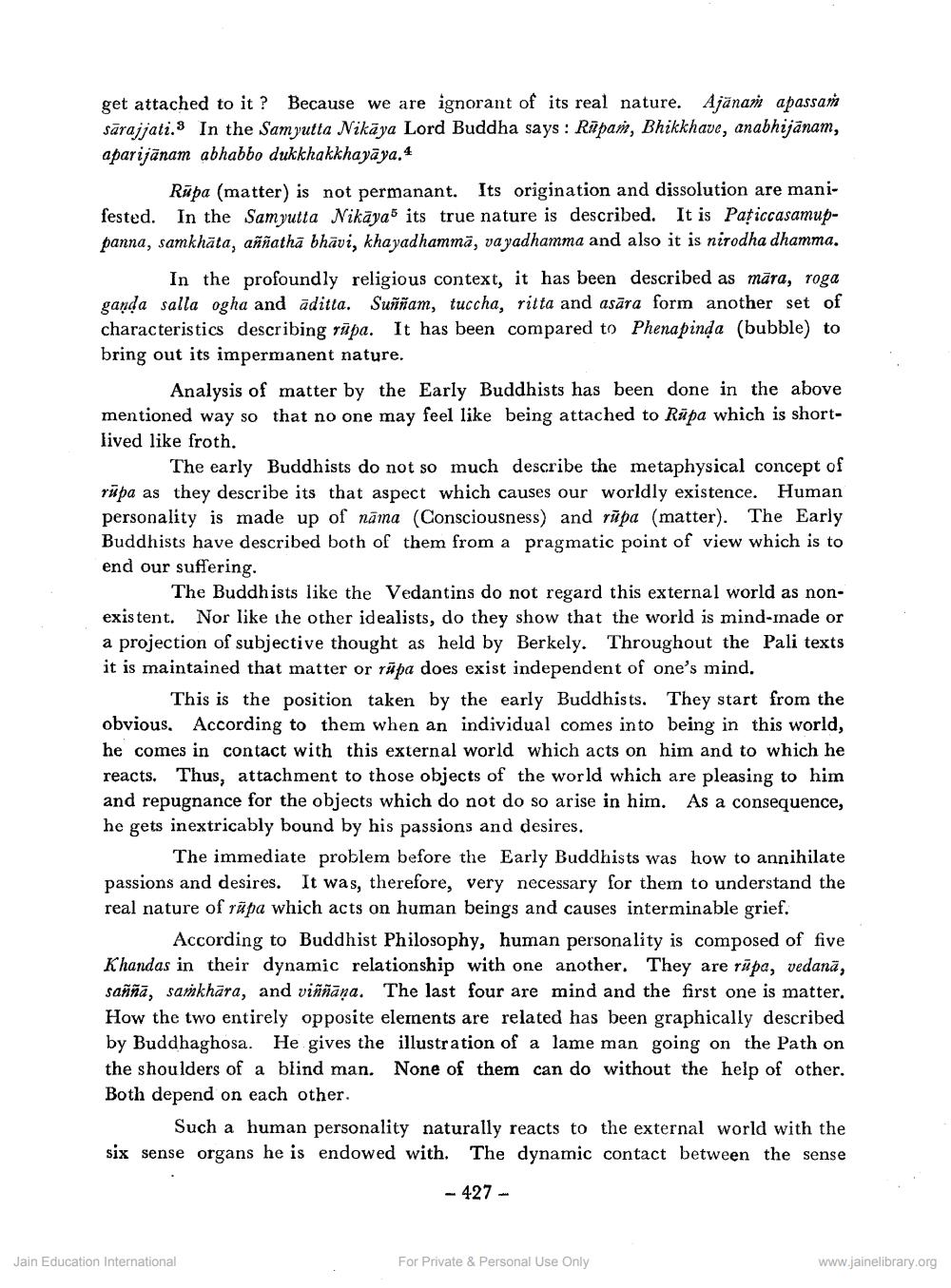Book Title: Concept of Matter in Lee Buddhism Author(s): Angraj Chaudhary Publisher: Z_Kailashchandra_Shastri_Abhinandan_Granth_012048.pdf View full book textPage 2
________________ get attached to it ? Because we are ignorant of its real nature. Ajänam apassan sārajjati.9 In the Samyutta Nikāya Lord Buddha says: Rūpam, Bhikkhave, anabhijānam, aparijānam abhabbo dukkhakkhayāya. 4 Rūpa (matter) is not permanant. Its origination and dissolution are manifested. In the Samyutta Nikaya5 its true nature is described. It is Pațiccasamuppanna, samkhāta, aññatha bhāvi, khayadhammā, va yadhamma and also it is nirodha dhamma. In the profoundly religious context, it has been described as māra, roga ganda salla ogha and aditta. Suññam, tuccha, ritta and asāra form another set of characteristics describing rūpa. It has been compared to Phenapinda (bubble) to bring out its impermanent nature. Analysis of matter by the Early Buddhists has been done in the above mentioned way so that no one may feel like being attached to Rūpa which is shortlived like froth. The early Buddhists do not so much describe the metaphysical concept of rūpa as they describe its that aspect which causes our worldly existence. Human personality is made up of nāma (Consciousness) and rūpa (matter). The Early Buddhists have described both of them from a pragmatic point of view which is to end our suffering. The Buddhists like the Vedantins do not regard this external world as nonexistent. Nor like the other idealists, do they show that the world is mind-mnade or a projection of subjective thought as held by Berkely. Throughout the Pali texts it is maintained that matter or rūpa does exist independent of one's mind. This is the position taken by the early Buddhists. They start from the obvious. According to them when an individual comes into being in this world, he comes in contact with this external world which acts on him and to which he reacts. Thus, attachment to those objects of the world which are pleasing to him and repugnance for the objects which do not do so arise in him. As a consequence, he gets inextricably bound by his passions and desires. The immediate problem before the Early Buddhists was how to annihilate passions and desires. It was, therefore, very necessary for them to understand the real nature of rūpa which acts on human beings and causes interminable grief. According to Buddhist Philosophy, human personality is composed of five Khandas in their dynamic relationship with one another. They are rupa, vedanā, saññā, samkhāra, and viññāņa. The last four are mind and the first one is matter. How the two entirely opposite elements are related has been graphically described by Buddhaghosa. He gives the illustration of a lame man going on the Path on the shoulders of a blind man. None of them can do without the help of other. Both depend on each other. Such a human personality naturally reacts to the external world with the six sense organs he is endowed with. The dynamic contact between the sense - 427 - Jain Education International For Private & Personal Use Only www.jainelibrary.orgPage Navigation
1 2 3 4 5 6 7 8
